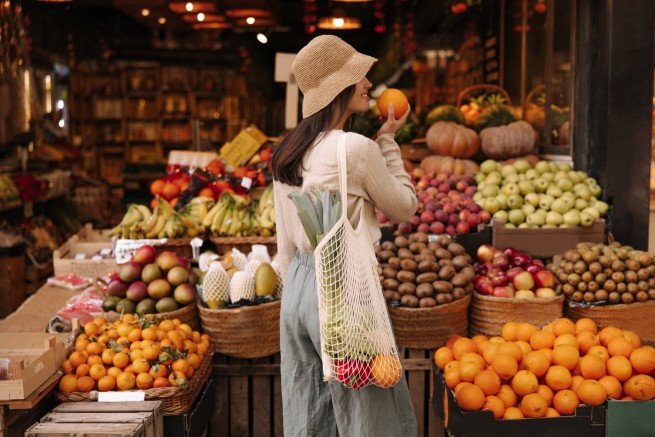The Greek soil is very fertile, and the agricultural products it produces are presentable and, above all, excellent in taste.
The choice of a fruit grown in a certain region of our country as the most popular in the world is not surprising. In particular Naoussa peaches took first place by preference in the list provided by World Statistics, and Chios mandarins took 7th place.
Top fruits in the world:
1. ?? Rodakina Naoussas
2. ?? Mangosteen
3. ?? Truskawka kaszubska
4. ?? Deglet Nour
5. ?? Lucuma
6. ?? Limone di Sorrento
7. ?? Mandarini Chiou
8. ?? Wiśnia nadwiślanka
9. ?? Açaí Berries
10. ?? Jabuticaba
~
eleven. ?? Citricos Valencianos
13. ?? Pêra…— World of Statistics (@stats_feed) December 6, 2023
However, in Greece every season has its favorites. And, according to experts, it is best to eat fruits and vegetables called seasonal. Seasonal products are those that grew in the natural growth area and ripened on beds or trees. In the modern world, the concept of seasonality often loses its boundaries. Today, every day in supermarkets there is a large assortment of fruits and vegetables; there is no shortage of even exotic products. In winter you can buy strawberries and watermelon, and in summer – tangerines and persimmons.
Winter
- December: avocados, tangerines, oranges, lemons, grapefruits, potatoes, cauliflower and Brussels sprouts, beets, carrots, leeks, onions and shallots.
- January: cauliflower and Brussels sprouts, carrots, leeks, shallots, onions, avocados, tangerines, oranges, grapefruits, lemons.
- February: bananas, kiwi, cabbage, potatoes, carrots, leeks, shallots, onions, oranges, tangerines, lemons, grapefruits.
Spring
- March: potatoes, onions and leeks, carrots, garlic, avocados, citrus fruits, apples.
- April: mango, citrus fruits, avocado, carrots, potatoes, cabbage.
- May: mango, strawberries, arugula, spinach, parsley, sorrel, asparagus, potatoes, carrots, lettuce.
- June: tomatoes, cucumbers, cherries, strawberries, celery, all types of cabbage, potatoes, sweet peppers, zucchini, lettuce, apricots, currants, blueberries, sorrel.
- July: tomatoes, cucumbers, celery, raspberries, gooseberries, all types of cabbage, lettuce, strawberries, cherries, zucchini, eggplant, sweet peppers, sorrel, apples.
- August: apples, tomatoes, cucumbers, all types of cabbage, lettuce, peas, zucchini, celery, eggplant, peppers, grapes, plums, apricots, pears, watermelons, melons, corn.
- September: apples, tomatoes, corn, cabbage, potatoes, beets, carrots, pumpkin, peppers, turnips, beans, grapes, pears, watermelon, melon.
- October: apples, persimmons, beans, pumpkin, cabbage, grapes, corn, potatoes, zucchini, eggplant, carrots.
- November: persimmons, pumpkin, apples, cabbage, turnips, potatoes, squash, peppers, beets, carrots, quince, figs.







More Stories
GMO Breakthrough: Pork Flavored Soybeans
Easter: strange Easter eggs and souvlaki lamps
The Thirty Years of Olive War is over